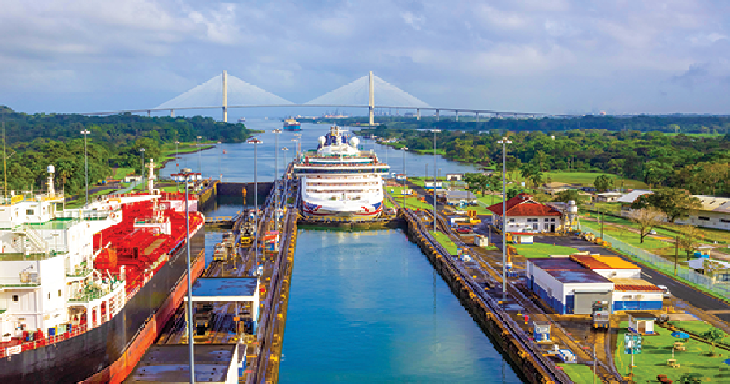
Panama Canal’s Revenue Up 14.9% in 2023 Despite Lower Cargo
Feb, 23, 2024 Posted by Gabriel MalheirosWeek 202408
In 2023, the Panama Canal’s revenue increased by 14.9% to $4.968 billion despite handling less cargo, with only 511.1 million PC/UMS tons moved. Officials shared this news on Thursday.
The canal faces water shortages due to climate change. Still, it expects to make 2.7% more in 2024.
The Panama Canal Authority (ACP) shared these details for the period from October 1, 2022, to September 30, 2023.
The canal needs 208,000 cubic meters of water for each ship because of its design. This water helps ships move up and down.
A new toll plan started in January 2023. It will end in 2025. The ACP believes this plan boosts income. Yet, water shortages could reduce earnings.
In 2024, tolls might bring in 74.56% of revenue. Other services could add 23.21%. Power sales might make up 1.05%, water sales 0.73%, and other sources 0.45%.
Key trade routes include trips between the U.S. East Coast and Asia and Europe and South America. The canal employs 8,549 people.
Ricaurte Vásquez, the canal’s chief, says Panama needs more water for its people and the canal. The ACP has studied this for years.
The ACP suggests making the canal’s water area bigger. This needs action from the government and lawmakers. It will help 55% of the people, industry, and shipping.
Since 1999, the ACP has managed this path between the oceans. This started after the U.S. left, following a 1977 treaty.
This role is vital for global trade and Panama’s economy.
Source: Rio Times
Click here to access the source material: https://www.riotimesonline.com/panama-canals-revenue-up-14-9-in-2023-despite-lower-cargo/
-
Economy
Feb, 12, 2025
0
Latin America ‘Disappears’ from Brazil’s Top Trade Surplus List
-
Meat
Oct, 13, 2023
0
Brazilian Chicken Meat Industry Soar with 6.5% Export Growth
-
Shipping
Dec, 03, 2020
0
BR do Mar cabotage project postponed a week after deputies disagree on voting
-
Shipping
Apr, 26, 2021
0
Mercosul Line vessel towed from Rio de Janeiro to Santos


